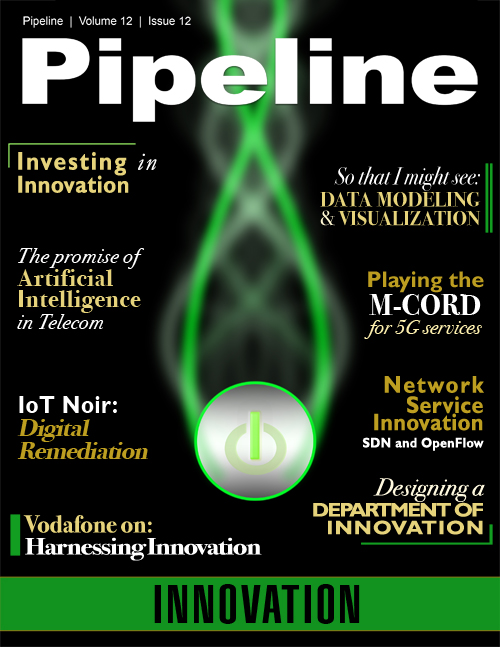The Promise of Artificial Intelligence in Telecom
By: Wedge Greene, Trevor Hayes

The legend is that Almon Strowger invented automatic telephone switching in order to stop human operators deliberately or accidentally misdirecting phone calls. This was an early (patented 1891) example of using machinery to improve security and reliability in the telecommunications network. However, it was primarily the need to manage growth that drove automation of the phone system. And since then, through various stages of electromechanical, electronic and computer driven developments, the telecommunications networks of the world have benefited from increasingly high levels of automation.
Most of this time, the underlying pattern of advancement stayed the same. First, automation improves reliability, security and the ability to scale. Second, the tasks we gave the machines -- connecting calls, identifying problems, calculating call costs, sending out invoices, taking orders -- were pretty much a straight replacement for human effort: just faster, more reliable, less expensive and immensely more scalable. However, there wasn’t much that machines did, in principle, that humans couldn’t do, if scale was ignored.
At least until the data explosion. Reading the network content, and routing the traffic based on that content, could only be done by a computational machine. It was a big step forward in which boxes started to do things that humans couldn’t do, even though humans designed them and understood how it was happening. Humans stopped operating that communications network and concentrated on designing, installing, and managing networks.
Now, we at the start of another transformative stage in telecommunications: the evolution of systems in the network that will be able to do things that human beings can’t do, or haven’t ever done. This is not just more automation and boxes; it’s the introduction of systems that will “reason,” “learn” and “sense” in non-human ways. When this is achieved, machines will make it possible to sustain the growth in telecommunications capabilities that humans need. This innovation is of course, Artificial Intelligence -- or AI.
There are rather a lot of definitions of AI out there, including some imaginative science fiction approaches, but most people get the general idea: AI is about machines that can “reason,” or at least act like thinking is going on, sufficiently for it to make no immediate difference. We know that AI requires or includes other currently evolving machine capabilities, such as semantic modeling, machine learning, expert systems, natural language understanding, data analytics, pattern recognition, robotics -- the list goes on. Underlying these machine capabilities is an ever-expanding set of technologies and software tools including neural networks, genetic algorithms, sensing devices and sensing interpretation algorithms.
Is AI here?
AI is here, but it is clearly the infancy of this technology. All of the technologies listed above are in use today. Some have been evolving for fifty years, first as mere concepts, then as models, then as actual products and capabilities. As far as telecom is concerned, AI can’t come too soon.
Products in the market today incorporate some of these AI foundation technologies. The next technological step after automating data routing is self-optimizing networks [SON]. With SON, networks'
goals and limits are expressed by designers. Then the network control software, based on current network conditions, live or modeled, structures the network itself to best meet these design
goals. At least, that is the expectation. Aria Networks is an expert in this area and a leading innovator in SON and other service modeling and design products.
"AI is used to process the trillions of possibilities – really fast – it has been calculated that brute force computing power alone would take years. Aria employs Genetic Algorithms, Simulated Annealing, Bayesian and Neural Networks to do optimisation, prediction and modelling," says Jay Perrett, CTO of Aria Networks. Poor goals or bad network conditions should equal a bad network, at least it has historically. But that's not necessarily the case any longer, software is making significant headway even here.
![]()



















